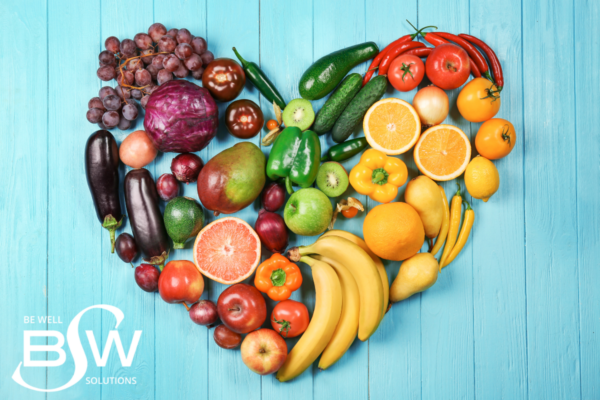The role that a well-balanced diet plays in the prevention of illnesses is often overlooked as doctors reflexively reach for a prescription pad, rather than a suggested grocery list, when discussing health strategies with their patients.
Fruits and vegetables offer a myriad of health benefits. Rich in vitamins, minerals, antioxidants, and fiber, they promote healing, boost our immunity, and strengthen our overall health status.
Strive to Make Them a Part of Every Meal
Given our fast-paced lifestyles and busy schedules, it can be challenging to consume enough of these nutrient-packed foods. According to the CDC[1], less than 15% of Americans eat the recommended servings of fruits and vegetables (1.5-2 cup equivalents of fruit and 2-3 cups of vegetables daily).
The Be Well Dietitians teach the importance of including fruits and vegetables in every meal, and fortunately, there are many simple and effective strategies that can help. Here are five easy ways to inject health into your diet by increasing your intake of fruits and veggies.
Eat The Rainbow – Create Colorful Dishes
Plant pigments contain nutrients that promote health. Different colored pigments are associated with specific nutrients. One of the best ways to ensure healthy eating is to include a wide variety of different colored whole foods at each meal. “Eating the rainbow[2]” ensures nutrient diversity and helps the entire family develop a wide variety of tastes.
Make Smoothies
Smoothies are fantastic options for making tasty and nutritious drinks. Imagine something that makes spinach and kale taste great! The Going Green Smoothie[3] is a wonderful way to get a boatload of powerful phytonutrients in a tasty and refreshing package. Check out the Vitamix site[4] for more great smoothie recipes.
Prep Snack Packs
Sometimes, we reach for unhealthy snacks simply because they are more convenient. Overcome this habit by prepping snack packs filled with fruits and vegetables. Wash, cut, and portion your produce into easy-to-grab containers or resealable bags. Carrot sticks, cucumber slices, cherry tomatoes, and apple slices are all excellent options. Having these conveniently packed snacks on hand will encourage you to make the right choices.
Add Vegetables and Fruits to Your Main Dishes
Elevate the nutritional value of your main dishes by adding fruits and vegetables. Add diced vegetables to sauces, casseroles, and stir-fries for a delightful burst of flavor and texture. Vegetables like cauliflower and squash make creamy and nutritious soups. Zucchini noodles can be a great substitute for traditional pasta. The versatility of fruits and vegetables allows you to experiment with different combinations, making your meals both nutritious and exciting.
Set Daily Goals and Monitor Progress
Setting realistic daily goals for fruit and vegetable consumption can help you stay on track and teach you the important skill of self-monitoring. Aim to fill half your plate with fruits and vegetables at most meals. Keep a food journal and note the days when you hit your goals, tracking your produce intake and progress over time. By monitoring ongoing eating habits, you can identify areas for improvement and celebrate success when you meet your goals.
Incorporating more fruits and vegetables into your diet doesn’t have to be a daunting task. By employing these practical strategies, you can make the process enjoyable and sustainable and enjoy life-long benefits.
Continue Reading August 2023 Newsletter: Scheduling Workouts

